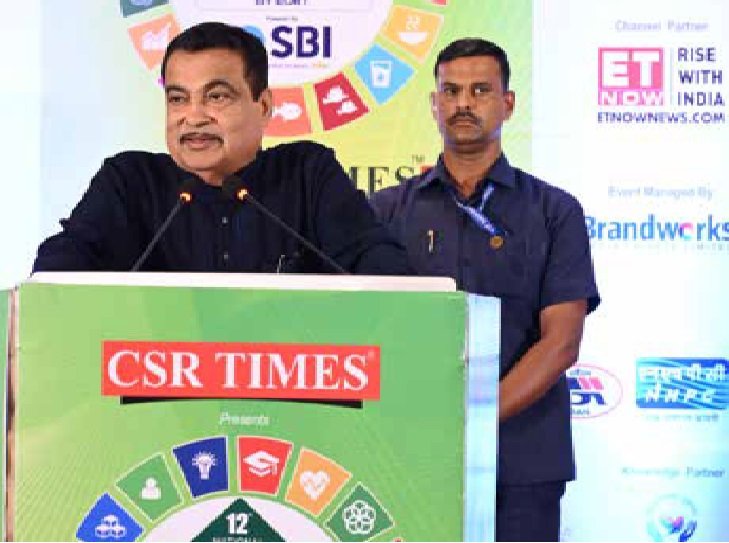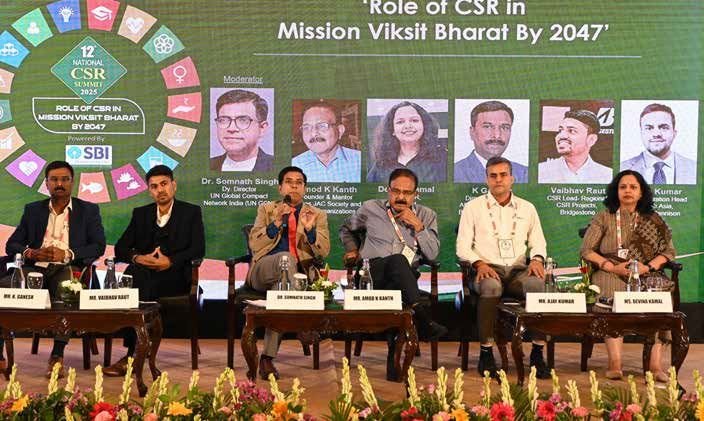COVER STORY

SCIENTIFIC SOCIAL RESPONSIBILITY
Science has been synonymous with progress and prosperity from time immemorial. The best scientific minds of our nation, who are power-houses of knowledge, innovation and enterprise, and are best equipped to drive this change. The time is ripe to redefine ‘R&D’ as ‘Research’ for the ‘Development’ of the nation – that is ‘R&D’ in the real sense. Science is after all, but a means to a far greater end – of making a difference in the lives of others, of furthering human progress and welfare. The time is also ripe, to commit ourselves to facilitate ‘Ease of Living’ for 125 crore Indians, through the power as well as potential of science and technology. Effective solutions to big problems of science and technology, also require close cooperation and coordination among scientists across diverse streams. The Union Government has initiated several new programs for the North-Eastern States, in the area of science. This is benefiting over five lakh farmers. We are now working to expand this network to all districts of the North-East. Several new centers are bringing relevant science and technology to the North-East. An “Ethno Medicinal Research Centre” has been set up in Manipur. This will undertake research on the wild herbs available in the North Eastern region, which have unique medicinal and aromatic properties.
State Climate Change Centers have been set up in seven North-Eastern States. They will undertake risk analysis, and raise public awareness about climate change. We have freed “bamboo” from being treated as a ‘Tree’ species, and classified it as a “Grass,” which it scientifically is. For this, we changed a decades old law. This amendment will allow for the free movement of bamboo. It will ensure that the production and consumption centers are seamlessly integrated. It will make farmers realize the true potential from the entire value chain in the bamboo ecosystem. Government is also revamping the National Bamboo Mission with an outlay of `1200 crore. States like Manipur will benefit from this decision.
The Indian Science Congress has a rich legacy. It has been led by some of India’s tallest scientists, such as Acharya J.C. Bose, C.V. Raman, Meghnad Saha and S.N. Bose. New India, should seek inspiration from the high standards of excellence, set by these great scientists. During our interactions on various occasions, I have exhorted our scientists to seek solutions to our socio economic problems. I have urged them to take up new challenges to benefit the poor and deprived sections of society. In this context, the theme chosen for the Indian Science Congress this year, is quite appropriate: “Reaching the Unreached through Science and Technology”. The theme is very close to my heart. Take the case of Rajagopalan Vasudevan recognized with a Padma Shri in 2018.He is a professor from Madurai who developed and patented an innovative method to reuse plastic waste in the construction of roads. The roads made using this method are more durable, water resistant and load bearing. At the same time he has found a constructive use for the ballooning problem of plastic waste. Professor Vasudevan has given this technology to the Government for free. This technology has already been used to lay over 5,000 kilometers of roads across 11 states.
Similarly, Arvind Gupta has been recognized with a Padma Shri in 2018, for inspiring generations of students to learn Science from Trash by using household materials and garbage to make toys for scientific experiments. Chintakindi Mallesham was given a Padma Shri in 2017, for inventing the Laxmi ASU Machine which significantly reduced the time and labour required to weave Sarees. I therefore urge you to direct your research and innovation towards solving the problems of our times and meeting the aspirations of our people. Scientific Social Responsibility is the need of the hour. India faces major socio-economic challenges which affect large sections of our population. We need science and technology to help us make India clean, green and prosperous. Let me re-iterate some of my expectations from scientists. A large section of our tribal population is affected by fldylsy vuhfe;k. Can our Scientists come up with a simple, cost-effective solution to this problem in the near future? A large proportion of our children are affected by malnutrition. To address this problem, the Government of India has launched the National Nutrition Mission. Your suggestions and solutions can help us meet the objectives of the Mission.
India requires crores of new houses. Can our scientists adopt 3D printing technology to help us meet this demand? Our rivers are polluted. It requires your innovative ideas and new technologies to clean them. We need a multi-pronged approach including efficient solar and wind power, energy storage and electric mobility solutions, clean cooking, conversion of coal to clean fuels like methanol, cleaner power from coal, smart grids, micro-grids and bio-fuels. We have set a target of having 100 Giga Watts of installed solar power by 2022. Efficiency of solar modules currently available in the markets around 17% to 18%. Can our scientists take a challenge to come up with a more efficient solar module, which can be produced in India at the same cost? Imagine the resources we will be saving on this account. ISRO uses one of the best battery systems to run satellites in space. Other institutions can partner with ISRO to develop cost effective and efficient battery systems for mobile phones and electric cars. We need to develop new procedures, medicines, and vaccines to get rid of silent killers like Malaria and Japanese Encephalitis. Research should also be conducted in Yoga, sports, and traditional knowledge disciplines. Small and medium scale industry units have been the main-stay for employment generation. With global competition, they are facing increasing challenges. Can our scientific and technological institutions take up the cause of the MSME sector and assist these units in improving processes and products?
We have to be future ready in implementing technologies vital for the growth and prosperity of the nation. Technology will allow far greater penetration of services such as education, healthcare, and banking to our citizens. India should become a major player in developing technologies, devices, standards and manufacturing for 5- G broadband tele-communication networks by 2020. Together with Artificial Intelligence, Big Data Analytics, Machine Learning and cyber-physical systems, effective communication will be a major ingredient in our success in smart manufacturing, smart cities, and Industry 4.0. Let us aim for India to be among the top 10 countries in the Global Innovation Index by 2030.
Four years from now, we will be celebrating the 75th year of our Independence. We have collectively resolved to build a New India by 2022. This goal requires whole-hearted contribution from each one of you. The Indian economy is on a high growth trajectory. But we rank low in Human Development Indicators. One of the important reasons for this in-consistency is major inter-state and intra-state disparity. To address this, we have launched a concerted effort to improve the performance of over 100 Aspirational Districts. We shall focus on important sectors such as Health and Nutrition; Education; Agriculture and Water Resources; Financial Inclusion; Skill Development; and Basic Infrastructure. All these sectors require innovative solutions, which cater to local challenges and requirements. The “one size fits all” approach cannot work in this case. Can our Scientific Institutions serve these Aspirational Districts? Can they catalyze creation and diffusion of appropriate technologies that generate skills and entrepreneur-ship?
This would be a great service to Mother India. India has a rich tradition and a long history of both discovery and use science and technology. It is time to reclaim our rightful place among the front-line nations in this field. I call upon the scientific community to extend its research from the labs, to the land. I am confident that through the dedicated efforts of our scientists, we are embarking on the road to a better future. The future we wish for ourselves, and for our children.


















